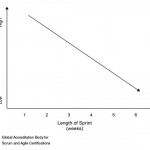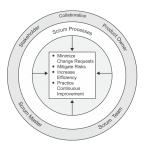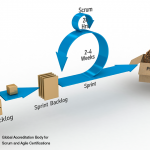Adaptive planning is a key practice in Scrum methodology. This implies that extensive estimating in terms of hours, which is time consuming at the beginning of a project, is not an ideal practice on Scrum projects. It is a daunting task to estimate at the beginning of a project. To determine the number of hours required even before any work is done, can not only be difficult but also be riddled with inaccuracies. It is also difficult to foresee impediments during the course of the project. Factoring time required to overcome any possible obstacles might make the estimates seem inflated. Story points reduce the effort spent on estimation so that we can get the project off the ground as quickly as possible.
Using hours for estimation can make it difficult for us to relate to the progress of the project, especially since they are the same units used to measure our work weeks. For example, if a team completes 300 hours of work in one week and 200 hours of work in the next, we might perceive that the team is slacking although that might be due to the complexity of the tasks or due to other non-project related activities such as meetings.
Story point estimates are a relative way of estimating effort for tasks. They indicate the difficulty of a particular task. Story points for a task are calculated using known tasks as frame of reference. Story points estimate the size of the story and do not necessarily have to be linked with the number of hours that might be required to complete it. This ensures that the estimation is not subjective and is a metric for the entire team rather than being based on any one individual’s proficiency.
Fibonacci numbers (1,2,3,5,8,13,21,34,45 and so on) are commonly used to estimate story points. Alternately, any other sequence could be used to estimate them.
For example, if a task such as creating an input screen, for which we already know the amount of effort already required to complete, has been assigned 3 points, we use it as a frame of reference to estimate other tasks based on their perceived complexity.

















